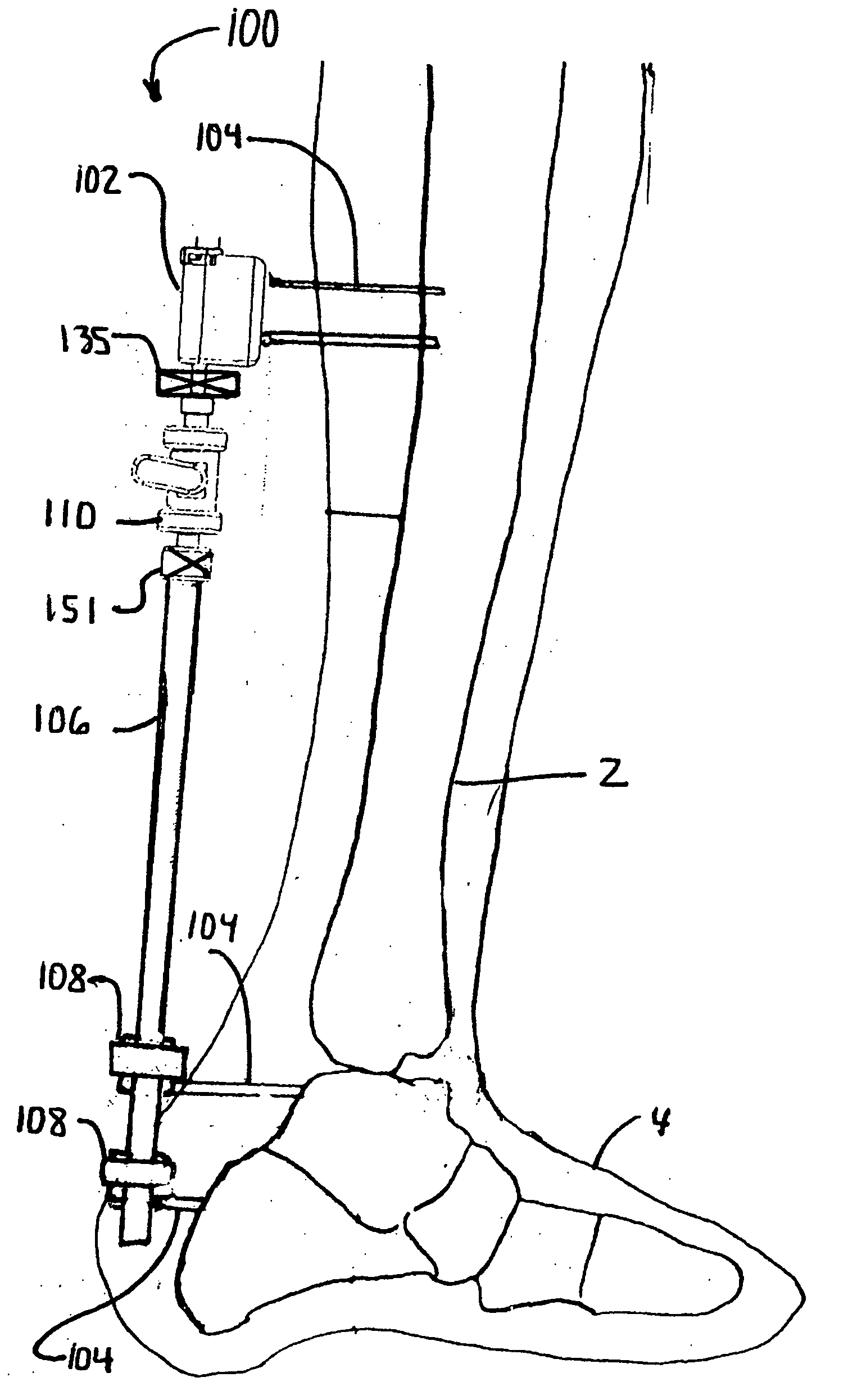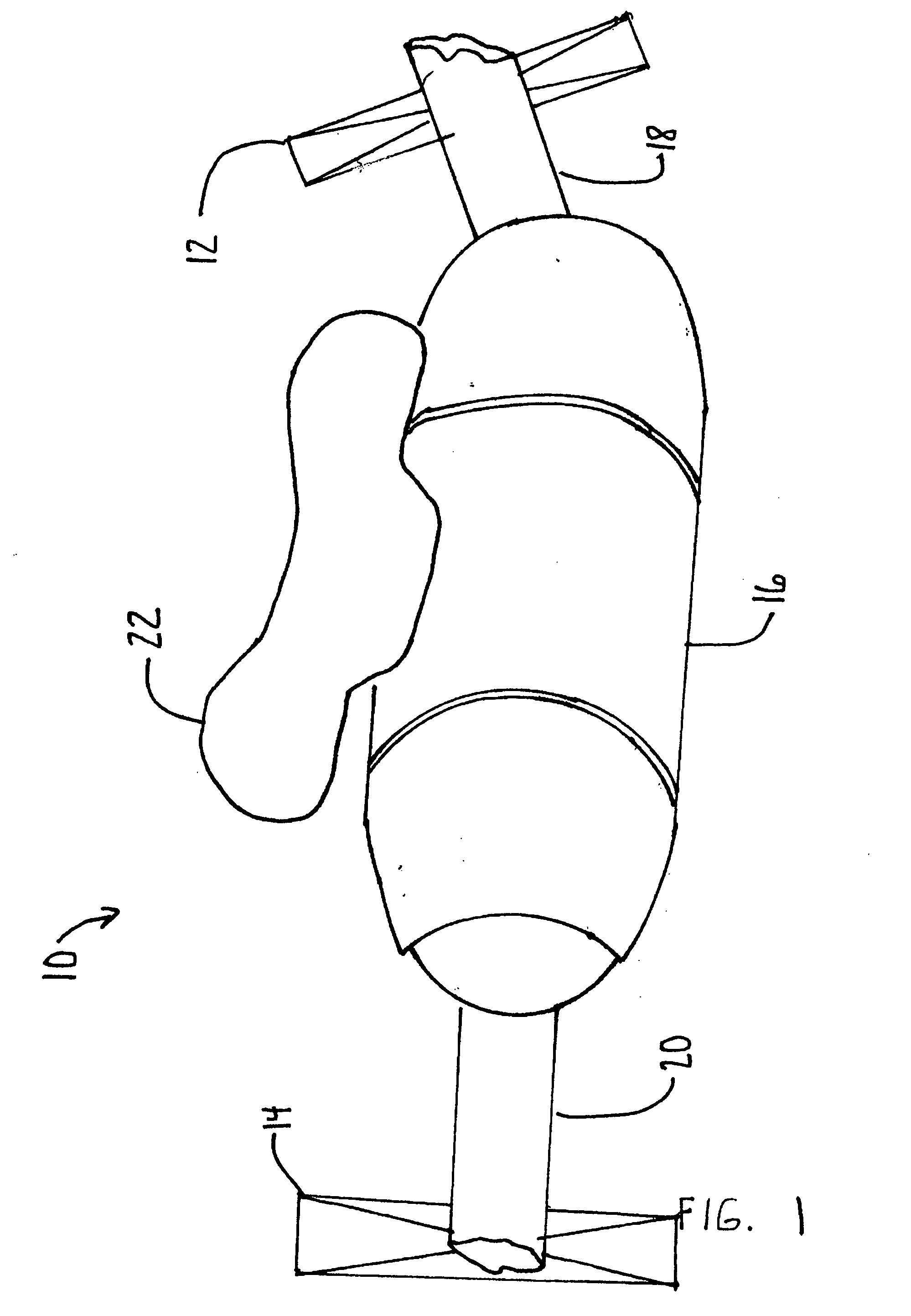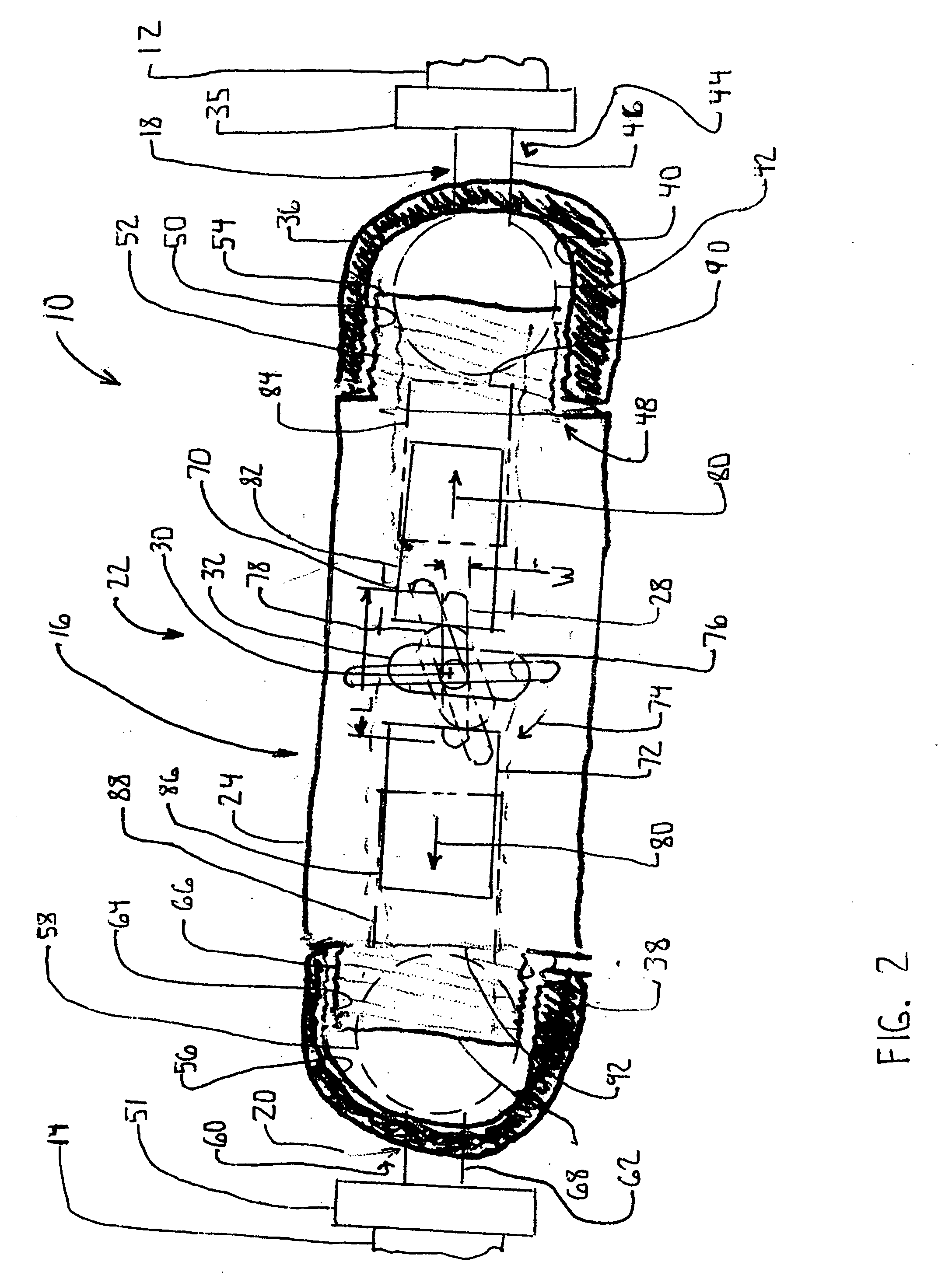Orthopaedic joint, device and associated method
a technology for orthopaedic joints and devices, applied in invalid friendly devices, medical science, surgery, etc., can solve problems such as long bone trauma, complex devastating fractures, and inability to achieve desired compression, so as to save surgeons' time in using external fixators, reduce the number of adjustments, and save surgeons' tim
- Summary
- Abstract
- Description
- Claims
- Application Information
AI Technical Summary
Benefits of technology
Problems solved by technology
Method used
Image
Examples
Embodiment Construction
[0117] Embodiments of the present invention and the advantages thereof are best understood by referring to the following descriptions and drawings, wherein like numerals are used for like and corresponding parts of the drawings.
[0118] According to the present invention and referring now to FIG. 1 an articulating joint 10 is shown for rigidly connecting a first object 12 to a second object 14 for use in orthopedics. The articulating joint 10 includes a body 16 as well as a first articulating member 18. The first articulating member 18 is selectively either pivotably connected to or rigidly connected to the body 16. The first articulating member 18 is connectable to the first object 12.
[0119] The articulating joint 10 further includes a second articulating member 20. The second articulating member 20 is selectively either pivotably connected to or rigidly connected to the body 16. The second articulating member 20 is connectable to the second object 14. The first articulating member...
PUM
 Login to View More
Login to View More Abstract
Description
Claims
Application Information
 Login to View More
Login to View More - R&D
- Intellectual Property
- Life Sciences
- Materials
- Tech Scout
- Unparalleled Data Quality
- Higher Quality Content
- 60% Fewer Hallucinations
Browse by: Latest US Patents, China's latest patents, Technical Efficacy Thesaurus, Application Domain, Technology Topic, Popular Technical Reports.
© 2025 PatSnap. All rights reserved.Legal|Privacy policy|Modern Slavery Act Transparency Statement|Sitemap|About US| Contact US: help@patsnap.com



